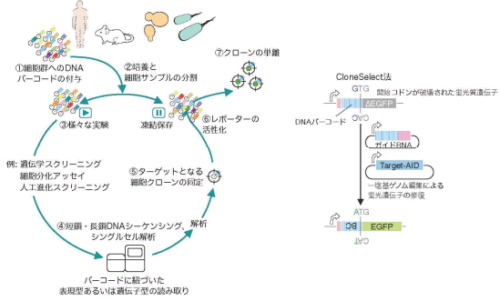2025-05-22 東京大学

開発したがん-微小血管チップ。血管構造の周囲にがん細胞集団を配置し、がん転移初期過程である、がん細胞集団の血管内侵入とがん細胞クラスターの放出過程の可視化を実現。
<関連情報>
- https://www.iis.u-tokyo.ac.jp/ja/news/4775/
- https://www.cell.com/iscience/fulltext/S2589-0042(25)00778-3
腫瘍微小血管オンチップから明らかになったがん細胞クラスター内侵入のメカニズム A tumor-microvessel on-a-chip reveals a mechanism for cancer cell cluster intravasation
Yukinori Ikeda ∙ Makoto Kondo ∙ Jun-ichi Suehiro ∙ … ∙ Tetsuro Watabe ∙ Masanobu Oshima ∙ Yukiko T. Matsunaga
iScience Published:April 23, 2025
DOI:https://doi.org/10.1016/j.isci.2025.112517
Highlights
- 3D co-culture visualizes tumor intravasation with organoids around microvessels
- Visualized tumor intravasation dynamics includes migration, co-option, CTC release
- TGF-β and activin in tumor-endothelium microenvironment are crucial for tumor intravasation
Summary
Circulating tumor cell (CTC) clusters are often detected in blood samples of patients with high-grade tumor and are associated with tumor metastasis and poor prognosis. However, the underlying mechanisms by which cancer cell clusters are released from primary tumors beyond blood vessel barriers remain unclear. In this study, a three-dimensional (3D) in vitro culture system was developed to visualize tumor intravasation by positioning tumor organoids with distinct genetic backgrounds to surround microvessels. We visualized tumor intravasation in a cluster unit, including collective migration toward microvessels, vessel co-option, and the release of CTC clusters—an invasion mechanism not previously reported. Furthermore, elevated levels of transforming growth factor β (TGF-β) and activin expression in endothelial cells within the coculture microenvironment were pivotal for facilitating tumor cell intravasation, which was associated with endothelial-to-mesenchymal transition (EndoMT) in microvessels. Our 3D in vitro system can be used to develop therapeutic strategies for tumor metastasis by targeting the release of CTC clusters.


